What is the public cloud?
A public cloud is a third-party service that uses cloud computing to generate resources and infrastructure. The cloud architecture hosts cloud storage, applications, and virtual machines. The public cloud is accessible to end-users via the internet. Public cloud services can be free or paid. Cloud services are typically pay-per-use.
A public cloud allows a business to have scalability, connectivity, and resource sharing. Cloud vendors save businesses money by eliminating equipment and labour. Costs are also made more efficient by paying only for what you use.
Public Cloud History
During the 1960s, computer vendors like IBM and DEC popularised the concept of time-sharing. By the 1990s, telecommunications companies were utilising virtual private networks (VPN). This allowed networks to share user bandwidth in a cloud environment.
The cloud computing model concept began in 1996 with the first known mention in a Compaq internal document. Going back to the original ARPANET in 1977, the cloud symbol represented networks of computing equipment. In 2006, Amazon Web Services introduced its Elastic Compute Cloud (EC2). Less than two years later, Google released the Google App Engine, and by 2010, Microsoft Azure was born. By 2012, IBM SmartCloud and the Oracle Cloud were available for organizations.
Today, there are many types of public cloud services and cloud vendors available for organisations.
How does public cloud work?
The public cloud allows for multiple users to have access to the same resources. This access is granted over the internet. While multiple users can share the resources, each session will be secure and private. Resources are scaled on-demand to each user, and multiple resource centres are available for access. Users are routed to the most efficient resource centre depending on their location.
Expect a public cloud to feature:
- Multi-tenant access
- On-demand computing
- Resource pooling
- Pay-per-use
- Measured service
- Security
- Data Resiliency
- Around the clock availability
The public cloud allows companies to expand their resource demands as quickly as needed. This is usually done with pay-per-use service, and cloud management tools are normally provided.
How is public cloud structured?
The provider is responsible for all cloud architecture. This starts with physical stacks of servers in data centres. These sites provide the infrastructure to host resources and applications. The multi-tenant architecture allows multiple users to access the resources while keeping each tenant’s private and secure data.
When it comes to security, a public cloud is usually protected by up-to-date cybersecurity methods. Additionally, built-in redundancies are included to prevent data loss.
Organisations are usually given access through a pay-per-use pricing model. It is up to the customer to monitor their resource usage. The customer must decide if money can be saved by scaling down or decide if resource limits are being hit too often.
What are the service models of public cloud?
Because businesses will have diverse needs, there are three main types of public cloud services models.
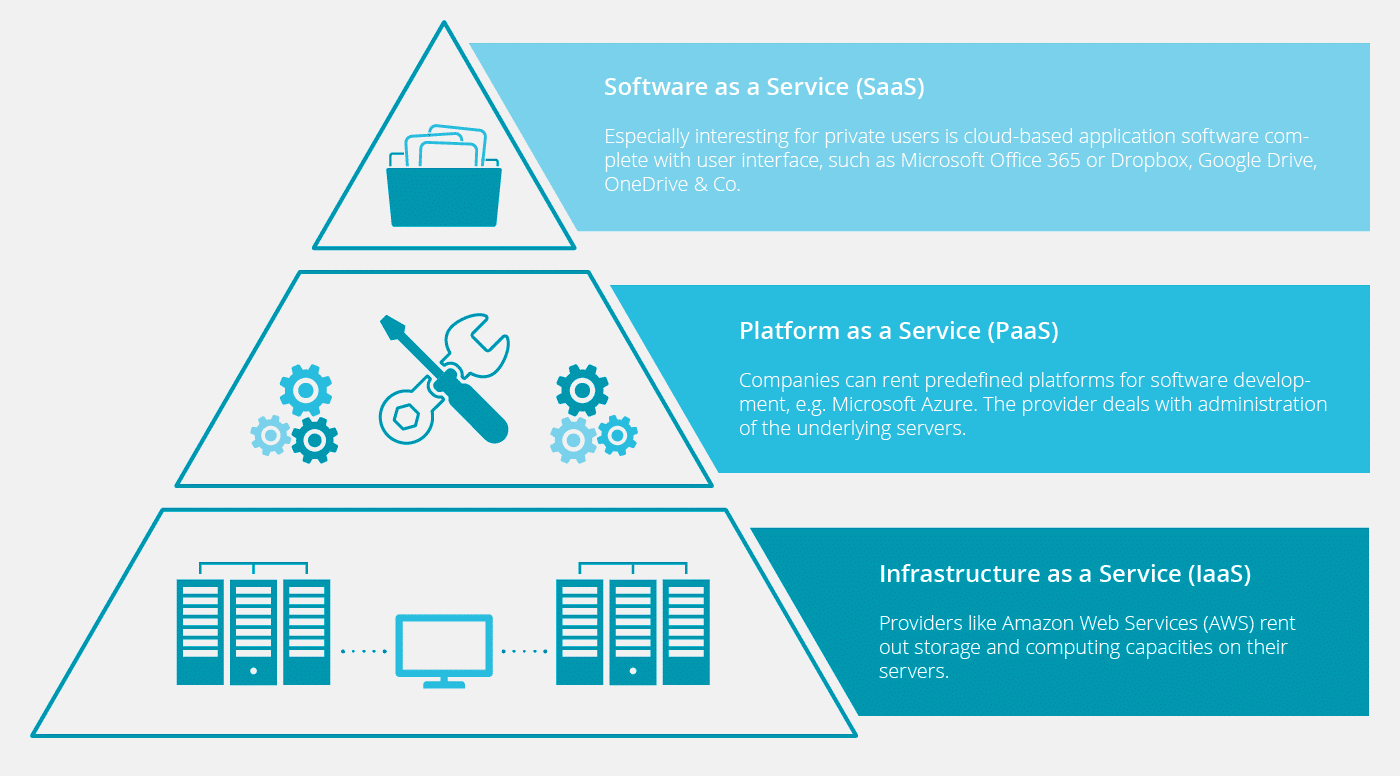
SaaS
Software-as-a-Service providers distribute software solutions hosted on a cloud; this enables users to access the software from most internet-connected devices. It saves companies the initial hardware investment for on-premise solutions. Additionally, this cuts costs on IT support and maintenance of the software and computing equipment. Some well-known SaaS vendors are Dropbox and Microsoft 365.
PaaS
Platform-as-a-Service providers host applications and tools on the cloud. This third-party builds and supports a high-performance environment delivered over the internet. Cloud resources are useful for companies looking to develop or use products without investing in huge infrastructure costs. RingCentral supplies a type of PaaS known as Unified Communications as a Service.
IaaS
Infrastructure-as-a-Service providers outsource their entire data centre, creating cloud infrastructure. Servers, storages, and other virtual computing resources are available to users over the web. The virtual environment is maintained by cloud providers like Oracle Cloud and Google Cloud infrastructure.
What are the best features of public clouds?
There are many features available to organizations depending on which type of cloud service they sign up for. But most cloud vendors will provide similar solutions to fit your needs.
Provisioning
Cloud computing resources are supplied on demand using Kubernetes-based platforms and infrastructure. Businesses can adjust their usage to maximise resources vs cost.
Pooling
Infrastructure and resources supplied by the provider are scaled to each tenant’s needs. This means that resources are adjusted to demand with no apparent effect on the end-user.
Scalable
Cloud services are scalable to any business. Resources can almost expand and adapt alongside company or project growth.
Pay-per-use
With cloud services, you only pay for what you use. Companies can reduce IT costs to only what they need. This frees up precious capital.
Measured
Cloud vendors provide cloud monitoring tools. Organizations have access to great amounts of data to see usage trends and adjust their spending.
Resilient
The cloud is stored in resilience centres. These centres readapt infrastructure and help you maintain consistent data. This prevents the loss of production when upgrading or replacing devices.
Availability
Cloud providers have redundancy centres. These allow users to be routed to the nearest functioning data centre. Availability aids in rapid disaster recovery, preventing a lack of availability when a data centre is down for maintenance or other reasons. Cloud services typically have greater than ninety-nine per cent uprate and very low latency for end-users.
Secure
Whichever operating system your business uses, it probably has a firewall. With the cloud, this can be all the cybersecurity required on your end. Providers devote their resources to cloud security services to protect your data. This saves companies from investing in IT equipment and staff with the necessary skills to set up on-premise cybersecurity.
Accessible
Users can access resources when needed with any device that can connect to the cloud over the internet. This allows flexibility to these users and how companies structure their workplace environment.
Connectivity
The cloud environment simplifies the connection of a global workforce. This increases collaboration and productivity.
What are the benefits and challenges in public cloud computing?
While the public cloud is one of the most rapidly growing cloud computing areas, it is not for everyone. When organizations consider whether to use a public cloud, they must see if the positives outweigh the negatives.
Benefits
-
Cost
Many businesses will find that moving to a public cloud will save them money. This is because, with the cloud service, you will only pay for what you need. Cloud service plans usually have flexible pricing.
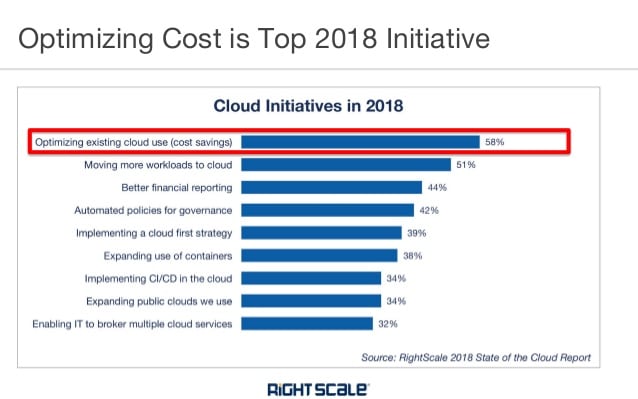
Customers are provided with monitoring tools to see exactly what they are paying and adjust usage accordingly. Businesses that take advantage of these tools will be able to cap precious spending and use those savings for other business parts.
-
Maintenance-free
This means for businesses that there is no requirement for an IT team or expensive on-premise equipment. Infrastructure and resources, such as security, are automatically upgraded. This ensures the service stays up to date. Businesses can divert company resources to more important areas with the knowledge that their IT services are up to date. Upgrades are installed by the provider when available, such as machine learning and AI automation.
-
Easy setup
Cloud migration can be done in a matter of hours with online migration. A company’s IT team can connect to the cloud remotely and oversee all migration processes. As soon as the virtualisation is complete, cloud deployment can occur rapidly and simultaneously for all users.
For larger or more secure migrations, IT teams can transfer data physically to the service data centres. Of course, this will be a more lengthy process.
-
Unlimited Scalability
Public cloud services often utilise Kubernetes-based platforms with the automation of resource scaling. This means companies never have to worry about peak workload times or tasks. Businesses can expect consistent service availability at all hours of the day.
-
Agility
This also affords companies a great deal of agility. Businesses can rapidly evolve with a public cloud. The technology, tools, and other processes can quickly be changed and adapted to suit the business needs. For companies based in more than one location, these changes will be simultaneous. Better agility will contribute towards more productivity, better management of company resources, and faster rollouts of new initiatives and projects.
-
Data Recovery
Service providers utilise multiple data centres and cloud-native backup technologies. This provides companies with the highest resiliency. Not only will data be secured by redundant service centres, but in the event of an organisation-wide disaster, recovery will be seamless. In a matter of minutes to hours, the business will recover and return to the status quo.
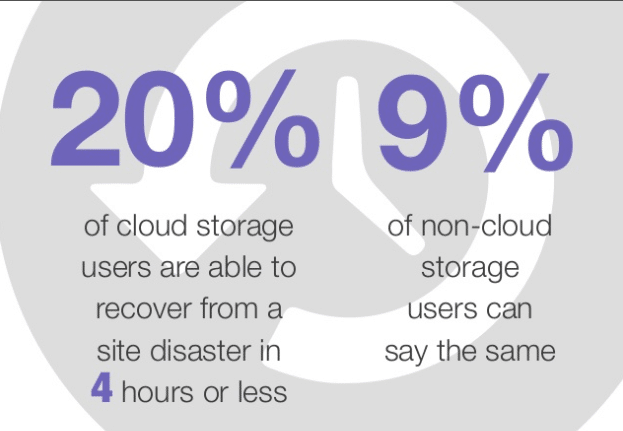
Technology is forever improving, but glitches will occur from time to time. With a public cloud strategy, disaster recovery is quick and simple. And businesses save loads of costs in lost time and productivity.
-
Continuity
During the uncertainty of 2020, organisations need to find ways to deal with a rapidly changing workplace. Businesses will need to find solutions that minimize disruptions and maintain continuity.
Today, more people are working from home. Embracing public cloud services will ensure consistent tools and resources for staff regardless of the at-home devices. Staff performance and productivity will not be lost due to individuals being forced to use old technology.
A public cloud service will give you the flexibility to adapt to whatever the future may hold. If anything comes up, you and your team will have the ability to work from wherever is necessary.
Scale up your ability to meet demand with almost no setup. You can work with your cloud provider to find what works for you. And as soon as you need to change anything, you can do it rapidly with self-service options.
Online migration can ensure your company is deployed on the cloud in no time. Many cloud providers offer open APIs for your IT team to build their own integrations. Otherwise, they can provide cloud tools to fit your business needs.
Cloud technology is guiding the public sectors throughout 2020 and beyond. With RingCentral UCaaS, you can unlock the power of digital communications for your business. Be prepared for whatever the future holds. Contact RingCentral about our UCaaS system to discover the benefits of UCaaS for the public sector.
Challenges
-
Cost
While cloud services offer great flexibility with pricing options, too many options can be a bad thing in certain cases. A lot of the time, pricing plans can be very confusing. When on a pay-per-use plan, small and medium-size businesses must take care not to overspend. Providers will supply monitoring tools and store measured service data on the cloud. These tools are available for the customer so that they can figure out their usage and costs.
When used correctly, a public cloud service can save a business a lot of money. But the caveat is that the efficiency of spending is the responsibility of the business. Initially, companies will need to work with providers that guide them on what they need. Afterwards, the business is responsible for altering the usage or spending. Some companies may find it hard to navigate these pricing plans or have the necessary resources to implement them properly.
-
Security
Most businesses’ number one concern with using a public cloud is security. For small to medium businesses, security on a public cloud will likely exceed anything they could expect to afford as an on-premise solution. This includes the costs of expensive IT infrastructure, technical staff, and regular maintenance. But for larger companies or organizations dealing with sensitive data, having everything on a public cloud may not work.
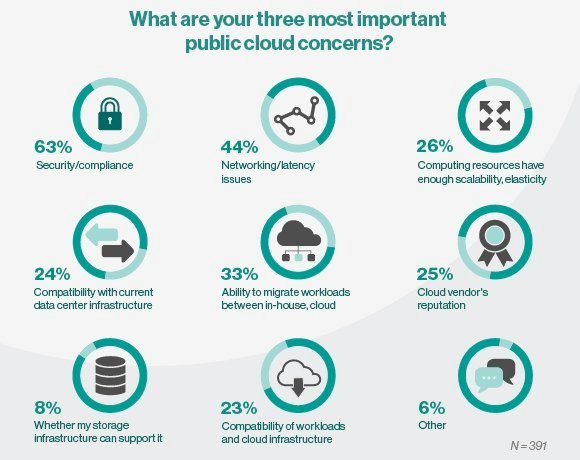
Updated security tools guard the public cloud environment. But sometimes more protection is necessary. Susceptible data needs to be privately stored to ensure compliance and offer maximum protection. For these types of organisations, there are alternative multi-cloud or hybrid solutions.
The Pros and Cons between Public Cloud Vs. Private Cloud Vs. Hybrid Cloud
The public, private, and hybrid cloud models offer a range of solutions. Every organisation can find a solution to fit their needs.
Public Cloud
Public cloud providers offer the maximum amount of providers and services. Common names are AWS and Microsoft Azure. These services offer the greatest flexibility, accessibility, redundancy, and availability.
Public cloud vendors offer multi-tenant services with a shared infrastructure. The public cloud model is accessible on any device via the internet. Of course, being online always brings some security and privacy risks.
Private Cloud
A private cloud is physically on-premise cloud infrastructure. Only a single organisation has access to these resources via a private network. Private cloud networks require a large investment as well as much higher IT department costs. However, they allow an IT team to have finer control over security options and the strictest compliance.
Hybrid Cloud
Cloud vendors such as Red Hat are building hybrid cloud architecture. The hybrid cloud model is one where a company utilizes an internal private cloud and an external public cloud provider. This allows organizations to gain the benefits of both types of cloud services.
However, both hybrid and private cloud models come with a high price. It is usually only a solution for larger companies or organisations needing absolute privacy for sensitive data. For example, a healthcare company could use a public cloud for many of its daily software needs but use a private cloud to store vital patient data.
Who are top public cloud providers
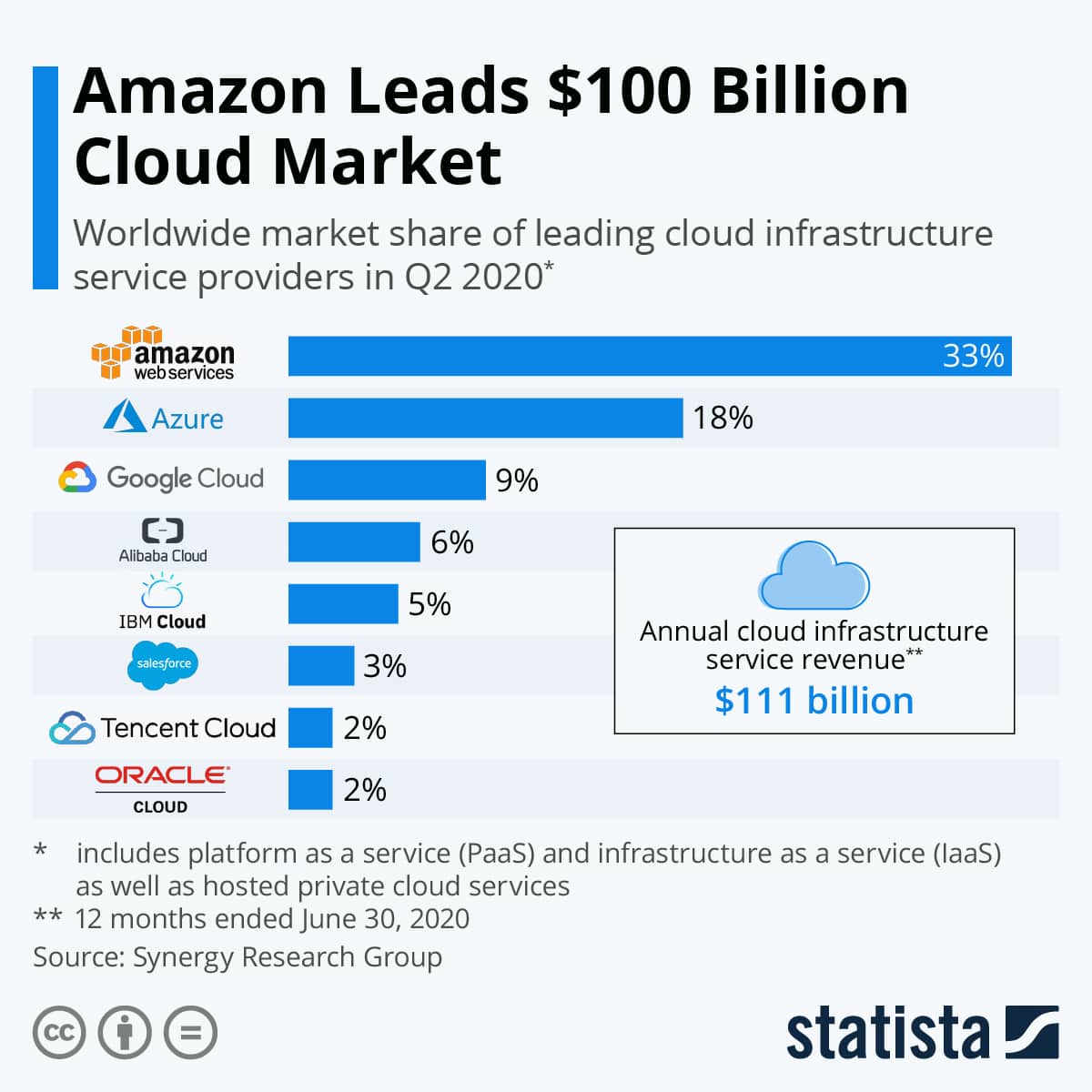
Amazon Web Services (AWS) is the leading public cloud provider. They were the earliest example of what modern IaaS cloud services can offer. Second to them is Microsoft Azure. This public cloud provider offers similar services to AWS. Azure has a well-established PaaS portfolio grouped in the Azure App service.
In 2008, Google entered the market with the Google App Engine. A PaaS for developing and hosting web applications in google-managed data centres.
Google Cloud Platform (GCP) runs on the same infrastructure that Google uses internally. Currently, the service has fewer cloud offerings than the top 2 but boasts a growing user base and continues to add services.
How do RingCentral cloud computing solutions transform modern businesses?
RingCentral cloud solutions offer flexibility for modern businesses. Their Unified Communications as a Service provides a modern cloud infrastructure for businesses to adapt to an uncertain future. Be able to connect to the cloud from anywhere with any device, and add team members wherever they are based in the world.
With RingCentral, you can expect enterprise-grade security and reliable service, with an industry-leading 99.999% uptime SLA.

Business delays and disruptions will continue as the new normal. RingCentral can help you maintain business continuity and connectivity. For adaptable communication options, we offer an all-in-one solution. However, a business can also choose essential options such as video conferencing, team messaging, or a cloud phone system.
Our PBX service is available in over 40 countries and international phone numbers in over 100 countries. This will ensure international offices and remote employees are on the same secure PBX system, letting you save money on expensive IT overhead while enjoying the reliability of cloud services.
During a time when employees are more likely than ever to be working apart, you can bring your team together with Ring Central’s UCaaS public cloud.
Originally published Dec 28, 2020, updated May 15, 2021


